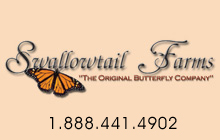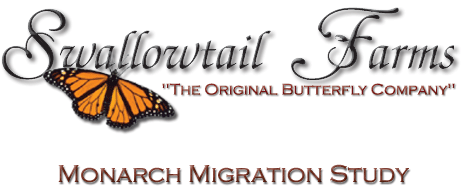
DO Farm-Raised
MONARCHS MIGRATE?
~ NOVEMBER 10, 2000 ~
ABSTRACT
Due to the recent popularity of butterfly releases, some questions have arisen about how this activity might affect the native wild population. This study in particular will address the question about how the release of lab-reared monarchs into the wild affects the ability of the butterfly to navigate during the fall migration. We released 5,343 monarchs in various western states starting on September 16, 1999 and ending on October 19, 1999. We were pleased to find out that they do indeed migrate. All of our monarchs were 8th to 9th generation lab-reared from 120 original wild caught monarchs. Even though there was no exposure to the wild-caught gene pool, that they were reared in lab conditions, and that they were transferred and released far from their natal origin, they were still able to navigate along with the wild population.
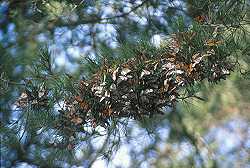 The purpose of this experiment is to broaden our general understanding of the ability of a laboratory-reared monarch butterfly (Danaus plexippus) to navigate during the fall migration. This information is important because of the recent increase in activity of transfers and releases of commercially-reared monarch butterflies. With this activity came the claims from some butterfly conservation groups, such as The North American Butterfly Association (NABA), that the mixing of lab-reared monarchs and the wild population could cause the failure of the butterfly to migrate. NABA writes:
The purpose of this experiment is to broaden our general understanding of the ability of a laboratory-reared monarch butterfly (Danaus plexippus) to navigate during the fall migration. This information is important because of the recent increase in activity of transfers and releases of commercially-reared monarch butterflies. With this activity came the claims from some butterfly conservation groups, such as The North American Butterfly Association (NABA), that the mixing of lab-reared monarchs and the wild population could cause the failure of the butterfly to migrate. NABA writes:
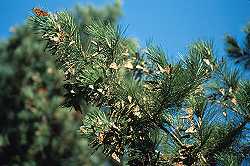 "Now imagine tens of thousands of mixed-up Monarchs unable to find the way to their overwintering grounds. This depressing image may become a reality if the rapidly-growing fad of releasing butterflies, including Monarch butterflies, at weddings, state fairs, and other public events continues to spread. Because the released Monarchs may have come from California, for instance, where they do not migrate to Mexico, their offspring may not be able to orient properly. Because the Monarchs were raised inside under unnatural conditions, it is possible that their delicate migratory physiology may not have been turned on."
"Now imagine tens of thousands of mixed-up Monarchs unable to find the way to their overwintering grounds. This depressing image may become a reality if the rapidly-growing fad of releasing butterflies, including Monarch butterflies, at weddings, state fairs, and other public events continues to spread. Because the released Monarchs may have come from California, for instance, where they do not migrate to Mexico, their offspring may not be able to orient properly. Because the Monarchs were raised inside under unnatural conditions, it is possible that their delicate migratory physiology may not have been turned on."
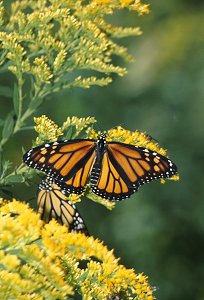 Unfortunately, NABA does not cite any scientific studies that would lead to the above conclusion, so we had to simply use the claims in the above paragraph as our springboard. Out of the expressed concern, we ask the question, "Do laboratory reared monarchs migrate?" We believe that if this question can be answered scientifically, we can relieve the concerns that NABA brings to the table.
Unfortunately, NABA does not cite any scientific studies that would lead to the above conclusion, so we had to simply use the claims in the above paragraph as our springboard. Out of the expressed concern, we ask the question, "Do laboratory reared monarchs migrate?" We believe that if this question can be answered scientifically, we can relieve the concerns that NABA brings to the table.
The Monarch Watch organization (Dr. Chip Taylor, University of Kansas) has already shown that at least 2nd generation monarchs reared artificially still migrate. This organization has been studying the monarch migration for many years. They have a tag and release program that has successfully tracked the migration of thousands of monarchs over the years. Many of their monarchs, however, were bred in lab conditions and reared in captivity. Quite a few of these have been recovered at the overwintering sights in Mexico. For more information on this, please go to www.monarchwatch.org and look at the 1999 and 2000 season summaries.
But, this data only provides information for up to 2nd generation monarchs. Many commercial breeders rear anywhere from 2 generations all the way to 9 generations without any exposure to the wild population gene pool. So, we concluded that the Monarch Watch information alone would not be sufficient to confidently answer the question. We decided to design this study around the most extreme case of inbreeding and lab rearing in order to see if these factors had any affect on the migration. So, we chose to use 8th to 9th generation lab-reared monarchs in order to provide data for the "worst case scenario."
METHODS AND MATERIALS
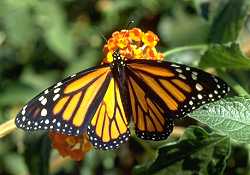 The concept here is to release tagged monarch butterflies in large quantities (approx. 200 each release) timed with the fall migration in hopes of recovering enough tags to produce significant data. We picked locations as far away as possible (within the western breeding population) and one location close by. The majority of the butterflies were released at the distant locations because it was assumed that the recovery rate would be much lower and thus more releases would be necessary in order to provide significant data.
The concept here is to release tagged monarch butterflies in large quantities (approx. 200 each release) timed with the fall migration in hopes of recovering enough tags to produce significant data. We picked locations as far away as possible (within the western breeding population) and one location close by. The majority of the butterflies were released at the distant locations because it was assumed that the recovery rate would be much lower and thus more releases would be necessary in order to provide significant data.
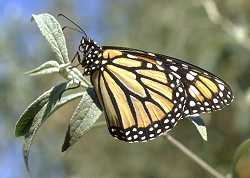 Once the butterflies emerged and were released into the flighthouse to be staged for shipping, they would be ready to be tagged. For each week that we were to ship tagged butterflies, we had a special crew come in specifically to do the tagging, packaging, and shipping. Typically, the butterflies were to be shipped on Wednesday of each week. The tagging would be done on Monday and Tuesday prior to shipping. Each day we would tag approximately 600 butterflies to be released back into the flight house. We used the Avery round neon red tags that are ½" in diameter. Each tag is marked with an individual serial number and a standard toll-free contact number using indelible ink. The tags are "trimmed" along the top and bottom in order to slightly reduce the weight of each tag. Each butterfly carries two tags; one tag on each of the hind wings. The tag is adhered to the wing using standard rubber cement. On the shipping day, the butterfly is placed into a small triangular shaped box, and then 200 of these are placed in a larger shipping container that is insulated and cooled. The butterflies are kept in good condition while in transit using this method.
Once the butterflies emerged and were released into the flighthouse to be staged for shipping, they would be ready to be tagged. For each week that we were to ship tagged butterflies, we had a special crew come in specifically to do the tagging, packaging, and shipping. Typically, the butterflies were to be shipped on Wednesday of each week. The tagging would be done on Monday and Tuesday prior to shipping. Each day we would tag approximately 600 butterflies to be released back into the flight house. We used the Avery round neon red tags that are ½" in diameter. Each tag is marked with an individual serial number and a standard toll-free contact number using indelible ink. The tags are "trimmed" along the top and bottom in order to slightly reduce the weight of each tag. Each butterfly carries two tags; one tag on each of the hind wings. The tag is adhered to the wing using standard rubber cement. On the shipping day, the butterfly is placed into a small triangular shaped box, and then 200 of these are placed in a larger shipping container that is insulated and cooled. The butterflies are kept in good condition while in transit using this method.
The scheduled releases and locations are as follows:
| Release date | Release location | |
| September 16, 1999 | Evanston, WY | |
| September 16, 1999 | Paonia, CO | |
| September 23, 1999 | Paonia, CO | |
| September 30, 1999 | Albuquerque, NM | |
| October 7, 1999 | Silver City, NM | |
| October 19, 1999 | Placerville, CA |
The location and timing was determined based upon our current understanding of the western monarch migration. We planned the majority of our releases to be on the eastern most side of the western breeding population, which placed the release locations very close to the Continental Divide. Each of the release dates were timed to coincide with the historic timing of the monarch migration for that particular location. Note that as the date progresses, the planned release location moves further south. Our local release would be done in Placerville, CA in mid-October. This town is located in the Sierra Nevada foothills and is only several hundred miles away from the closest overwintering sight.
· On September 15, 1999, we shipped the following under USDA permit numbers 35485 & 35486:
| Quantity | Serial Numbers | Location | FedEx tracking number |
| 200 |
Y000 - Y199 |
Evanston, WY |
790297326894 |
| 200 |
Y200 - Y399 |
Evanston, WY |
790297326909 |
| 200 |
Y400 - Y599 |
Evanston, WY |
790297326883 |
| 200 |
V000 - V199 |
Paonia, CO |
790297326850 |
| 200 |
V200 - V399 |
Paonia, CO |
790297326861 |
| 143 |
V400 - V542 |
Paonia, CO |
790297326872 |
· On September 22, 1999, we shipped the following under USDA permit number 35486:
| Quantity | Serial Numbers | Location | FedEx tracking number |
| 200 |
P000 - P199 |
Paonia, CO |
792501266205 |
| 200 |
P200 - P399 |
Paonia, CO |
791792809676 |
| 200 |
P400 - P599 |
Paonia, CO |
791792809893 |
| 200 |
R000 - R199 |
Paonia, CO |
791792809974 |
| 200 |
R200 - R399 |
Paonia, CO |
791792810084 |
| 200 |
R400 - R599 |
Paonia, CO |
791792810257 |
· On September 29, 1999, we shipped the following under USDA permit number 35462:
| Quantity | Serial Numbers | Location | FedEx tracking number |
| 200 |
A000 - A199 |
Albuquerque, NM |
792388399654 |
| 200 |
A200 - A399 |
Albuquerque, NM |
792388399723 |
| 200 |
A400 - A599 |
Albuquerque, NM |
792388399954 |
| 200 |
M000 - M199 |
Albuquerque, NM |
792388400022 |
| 200 |
M200 - M399 |
Albuquerque, NM |
790424642455 |
| 200 |
M400 - M599 |
Albuquerque, NM |
790424641784 |
Quantity Serial Numbers Location FedEx tracking number
· On October 6, 1999, we shipped the following under USDA permit number 35462:
| Quantity | Serial Numbers | Location | FedEx tracking number |
| 200 |
X000 - X199 |
Silver City, NM |
790306394418 |
| 200 |
X200 - X399 |
Silver City, NM |
790306394451 |
| 200 |
X400 - X599 |
Silver City, NM |
790306394473 |
| 200 |
H000 - H199 |
Silver City, NM |
790306394624 |
| 200 |
H200 - H399 |
Silver City, NM |
790776720631 |
| 200 |
H400 - H599 |
Silver City, NM |
790776720664 |
· On October 19, 1999, we released the following (no USDA permit necessary):
| Quantity | Serial Numbers | Location | FedEx tracking number |
| 600 |
S000 - S599 |
Placerville, CA |
Personal delivery |
RESULTS
Please see the Master Tagging Report for the actual data and the North American map for a visual of the estimated flight paths. A total of 36 monarchs were recaptured and validated. There are, supposedly, another 2 dozen tags in Mexico that have yet to be identified. Since we are unable to locate them and validate the serial numbers, we can only use our current confirmed data. Nevertheless, the 36 recaptures that we did get will provide a significant amount of data to come to some reasonable conclusions.
1. Local release.
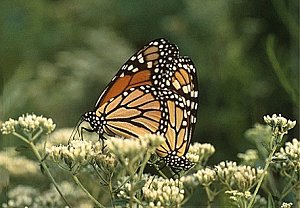 Our first significant finding from the local release is that lab-reared monarchs certainly do migrate after being transferred to a short distance away from their natal origin. Our local release in Placerville, CA greatly exceeded the historic standard recovery rate of ½ % (average recovery rate for the last decade of tag and release published statistics). Out of the 600 monarchs released, we needed at least 3 to be recovered at an overwintering site to be consistent with known averages. We had 20 recoveries which is more than a 3% recovery rate (6 times greater than the average). It was no surprise that we had a high recovery rate due to the short travel distance. But, this data does show clearly that the lab-reared monarchs were able to navigate properly after being released a short distance away from their natal origin.
Our first significant finding from the local release is that lab-reared monarchs certainly do migrate after being transferred to a short distance away from their natal origin. Our local release in Placerville, CA greatly exceeded the historic standard recovery rate of ½ % (average recovery rate for the last decade of tag and release published statistics). Out of the 600 monarchs released, we needed at least 3 to be recovered at an overwintering site to be consistent with known averages. We had 20 recoveries which is more than a 3% recovery rate (6 times greater than the average). It was no surprise that we had a high recovery rate due to the short travel distance. But, this data does show clearly that the lab-reared monarchs were able to navigate properly after being released a short distance away from their natal origin.
2. Ability to navigate after a long distance transfer.
With the data starting to come in from the local release, we had hope that we would soon start getting recaptures from the distant releases. Sure enough, this came to pass. From the releases in Evanston, WY on September 16, 1999, monarch #Y137 was found near Chrome, CO, which was clearly on it's way to Mexico (see map). Monarch #Y114 was found in Manifee, CA, which is very close to some of the Southern California overwintering sights. From the releases in Paonia, CO on September 16, 1999 and September 23, 1999, monarch #R259 was found in Amistad, NM, clearly on it's way to the Mexican overwintering sights. From the releases in Albuquerque, NM on September 30, 1999, a total of 8 monarchs were recaptured, both at and on the way to overwintering sights in California and Mexico. Finally, from the releases in Silver City, NM on October 7, 1999, 2 were recaptured in Mexico (#X556 and #X549), one on the way to California (#X238), and the other at a California overwintering sight in San Diego (#X184).
3. Migration direction does not necessarily depend on natal origin.
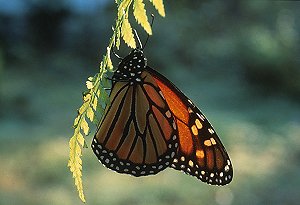 The next significant finding so far is that we have recoveries at both the Mexican overwintering sites and the California overwintering sites from one single release. For example, monarchs #M267 and #M274 were recovered in Ventura, CA and Goleta, CA, respectively, at the local overwintering sites. Monarch #A314 was recovered at the Cerro Pelon overwintering site in Michoacan, Mexico. All three of these butterflies were released in Albuquerque, NM on September 30, 1999. This data could also indicate that the Mexican overwintering sites are not strictly composed of monarchs from east of the divide and vice versa. Please see the map for a visual of how the monarchs clearly travel in both directions.
The next significant finding so far is that we have recoveries at both the Mexican overwintering sites and the California overwintering sites from one single release. For example, monarchs #M267 and #M274 were recovered in Ventura, CA and Goleta, CA, respectively, at the local overwintering sites. Monarch #A314 was recovered at the Cerro Pelon overwintering site in Michoacan, Mexico. All three of these butterflies were released in Albuquerque, NM on September 30, 1999. This data could also indicate that the Mexican overwintering sites are not strictly composed of monarchs from east of the divide and vice versa. Please see the map for a visual of how the monarchs clearly travel in both directions.
4. Wide dispersion.
From these releases, we have a dispersion range from the California coast to Lenora, KS (#R170). This range is over 1,200 miles from a general release location along the Continental Divide. From one release alone, in Albuquerque, NM, we have a dispersion range close to the same distance of 1,200 miles. Monarchs #M267 and #M274 were recovered along the California coast and monarch #A314 was recovered in Mexico. With dispersion that is this widespread, it is inconsistent to believe that isolated genetic populations evolved to form an eastern specific and western specific subspecies.
Map of North America
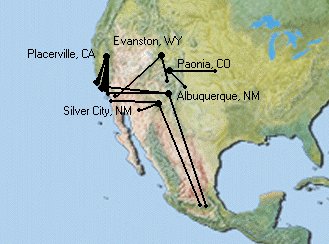
Master Tagging Report
| Release Date |
Location | Serial Numbers | Quantity | Recapture Quantity |
| 9/16 | Evanston, WY |
Y000 - Y599 |
600 |
2 |
| 9/16 | Paonia, CO |
V000 - V542 |
543 |
- |
| 9/23 | Paonia, CO |
P000 - P599 |
600 |
- |
| 9/23 | Paonia, CO |
R000 - R599 |
600 |
2 |
| 9/30 | Albuquerque, NM |
A000 - A599 |
600 |
3 |
| 9/30 | Albuquerque, NM |
M000 - M599 |
600 |
5 |
| 10/7 | Silver City, NM |
X000 - X599 |
600 |
4 |
| 10/7 | Silver City, NM |
H000 - H599 |
600 |
- |
| 10/19 | Placerville, CA |
S000 - S599 |
600 |
20 |
|
Total |
5343 |
36 |
Recapture Details Report
| Date | Location | Serial Number | Notes / Conditions |
| 10/2 | Tijeras, NM |
M016 |
found alive and well |
| 10/5 | Amistad, NM |
R259 |
found dead in yard |
| 10/12 | Lenora, KS |
R170 |
found alive and well |
| 10/16 | near Chrome, CO |
Y137 |
found frozen to a stick |
| 10/24 | Manifee, CA |
Y114 |
found alive and well |
| 11/1 | San Luis Obispo, CA |
S230 |
found alive and well |
| 11/1 | Summerland, CA |
S592 |
found clustering |
| 11/5 | Santa Fe Springs, CA |
S456 |
barely alive |
| 11/9 | Tucson, AZ |
X238 |
alive and nectaring |
| 11/15 | Ventura, CA |
M267 |
found clustering |
| 11/15 | Ventura, CA |
S426 |
found clustering |
| 11/15 | Ventura, CA |
S399 |
found clustering |
| 11/15 | Santa Barbara, CA |
S350 |
found clustering |
| 11/16 | Summerland, CA |
S175 |
found clustering |
| 11/16 | Santa Barbara, CA |
S440 |
found clustering |
| 11/16 | Santa Barbara, CA |
S048 |
found clustering |
| 11/17 | Santa Barbara, CA |
S444 |
found clustering |
| 11/17 | Carpinteria, CA |
S340 |
found clustering |
| 11/20 | San Diego, CA |
X184 |
barely alive |
| 11/20 | Isla Vista, CA |
S412 |
alive and mating |
| 12/8 | San Simeon, CA |
S168 |
found dead |
| 12/10 | Goleta, CA (UCSB) |
M274 |
found dead on campus |
| 12/14 | Santa Barbara, CA |
S255 |
found clustering |
| 12/14 | Santa Barbara, CA |
S444 |
found clustering (2nd sighting) |
| 12/14 | Ventura, CA |
S025 |
found clustering |
| 12/15 | Santa Barbara, CA |
S313 |
found clustering |
| 12/19 | Pismo, CA |
S405 |
found clustering |
| 1/2 | Cerro Pelon, Michoacan |
A314 |
found dead at overwintering site |
| 1/18 | Santa Barbara, CA |
S412 |
found dead |
| 2/19 | Pismo, CA |
S195 |
found dispersing from cluster |
| 2/25 | El Rosario, Michoacan |
M458 |
found clustering |
| 3/13 | El Rosario, Michoacan |
M458 |
found (2nd time) by guide |
| 3/21 | Angangueo, Michoacan |
X556 |
found by guide |
| 3/21 | Angangueo, Michoacan |
A466 |
found by guide |
| 3/21 | Angangueo, Michoacan |
X549 |
found by guide |
| 3/21 | Angangueo, Michoacan |
A462 |
found by guide |
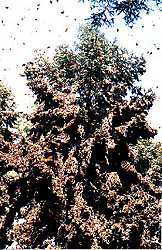 |
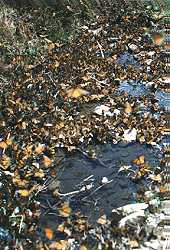 |
CONCLUSION
We have learned that lab-reared monarchs behave similar to wild monarchs in terms of migration behavior. Therefore, we believe that we can confidently answer "yes" to the question of whether or not lab-reared monarchs can navigate during the fall migration. But, we also answered another question about gene flow between the western and eastern breeding populations. Seeing how some of the monarchs ended up at both the Mexican overwintering sites and Californian overwintering sites from the same release, we can conclude that the monarch disperses and mixes enough during the migration to completely homogenize the two breeding populations. With this concept, we can conclude that it would be impossible for any genetic isolation to occur within the entire population. If any isolation did occur during the breeding months, it would then be wiped out from mixing during the fall migration and breeding at the overwintering sites.
